Ever wondered what it’s like to hike the Salkantay Trek? Here’s what to expect!
The excited chatter that bubbled away only a few moments ago has stopped. All is silent except for the laboured breaths we all take with each sluggish step upwards.
As I stop to desperately attempt to gulp in more oxygen, bent over, hands on my knees, I look around at my fellow trekkers and think: “what the hell have I signed up for here?”
We’re at the start of the Salkantay Trek, an alternative route to Machu Picchu that is far less crowded than the far more famous Inca Trail. Well, we should be on the Salkantay Trek, but Mother Nature had something else in store for us…
Our journey started in the dark of the morning, the van bumping along the cobble-stoned streets of Cusco to pick up my husband and I and the eight others in our multinational group: North Americans, Canadians, Norwegians, an Argentine and us, the Australians.
Cursory introductions had been made the evening before during our pre-departure briefing, so we all dozed off as the bus headed towards our planned starting point of Soraypampa, 120 kilometres from Cusco.
Before we could reach it, however, we were stopped in our tracks. Just two hours out of Cusco, the road had disappeared in an overnight landslide.
Change of plans
Getting out of the van, we all stared in awe at the ground in front of us in the low light of the rising sun – or, at least, where the ground should have been.
Yoel, our Alpaca Expeditions guide, was simultaneously on the phone, talking with the group of porters that accompanied us, and rubbing his chin contemplatively as he looked at the van and then ahead at the huge, missing gap in the road.
Yoel quickly made a decision, and we all piled back in the van and drove back to a wooden hut where we tucked into breakfast. As we spooned in scrambled eggs and fresh fruit, Yoel delivered the bad news.
“This changes things a bit, guys,” he said. “We’re going to have to walk from here instead. It means we’re going to have to cram four days of walking into three.”
Our eyes widened, but after the morning’s unexpected interruption, we were all eager to begin.
The day started off easily, walking along a flat dirt road, around the landslide, and to our camping spot. By the time we reached the camp site, it was drizzling, and despite the energetic walk, we all shivered in the cold.
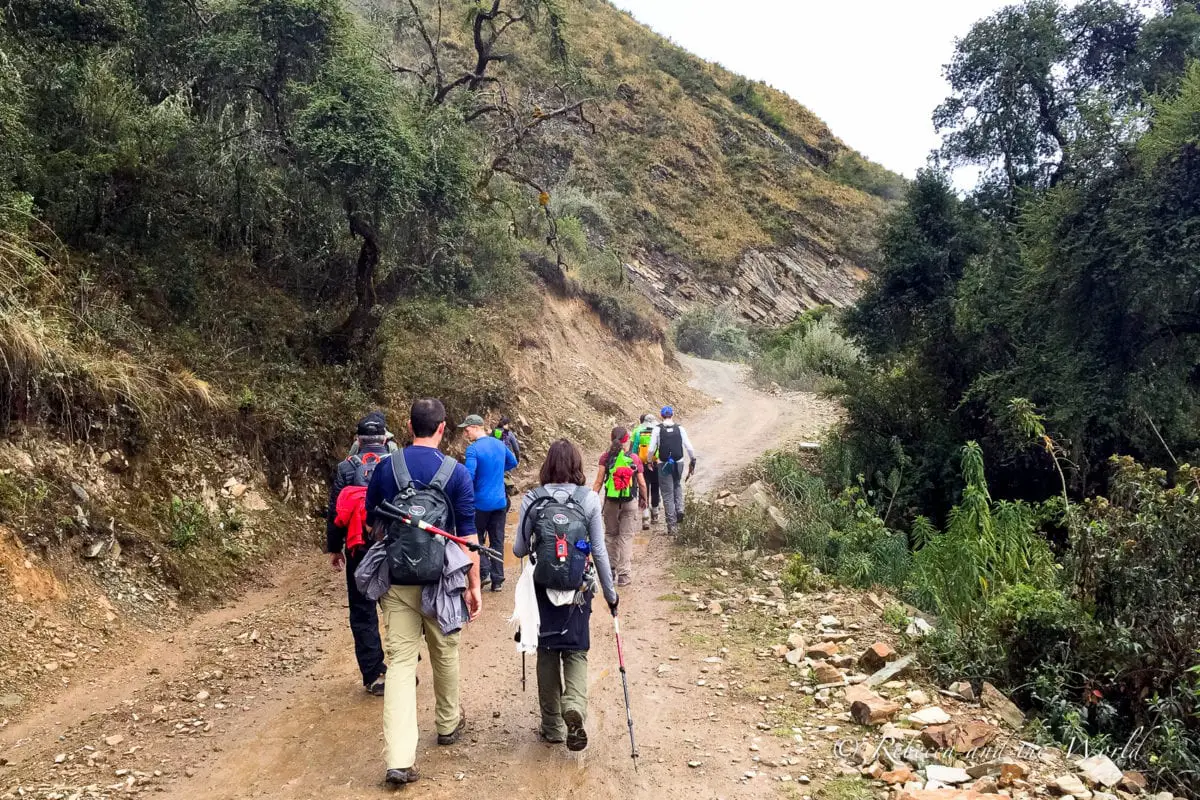
It was after lunch that we encountered our first real challenge. To fill in the afternoon, Yoel suggested a side trip to climb up to see a beautiful lake. He pointed to the top of a seemingly small hill with a slight incline. From the bottom it looked manageable and the “peak” loomed close.
This is where we start to wonder what we’ve signed up for.
READ NEXT: The ultimate Salkantay Trek packing list
The effects of altitude
This is also where we discover the effects that altitude has on breathing, as it sucks our breath away and stops our lungs completely filling with much-needed oxygen. At 4,200 metres above sea level, every step is an effort and the lack of oxygen clouds my head and makes my limbs heavy.
At the end of our trip, we’re amazed we managed to avoid altitude sickness in Peru, but some of our fellow trekkers weren’t so lucky.
When we reach the top, the view is worth it. We gaze over Lake Humantay, of a colour so blue it’s indescribable in words.
Around the hills surrounding the lake are small piles of smooth oval stones, piled one on top of another as an offering to the gods. We build our own contribution, hoping the gods will smile down on us along this journey, and then make our way back down to camp – a feat achieved far quicker than the journey up.
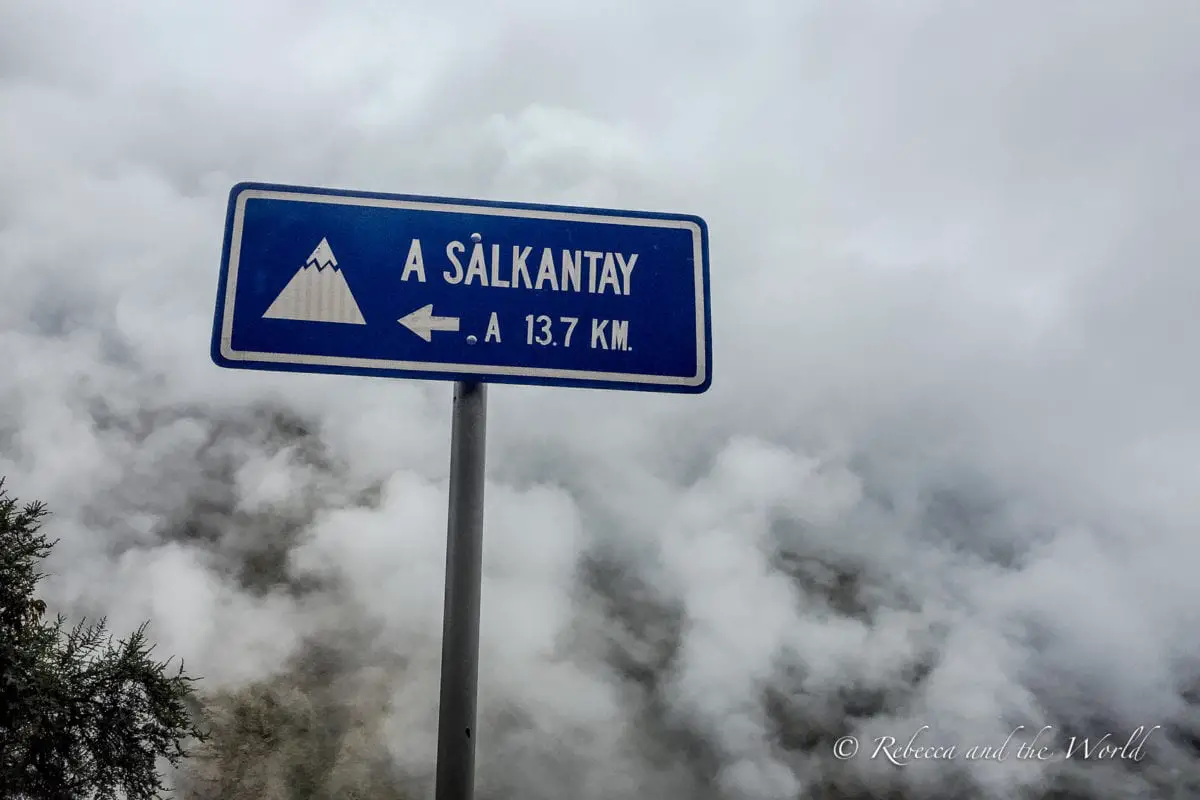
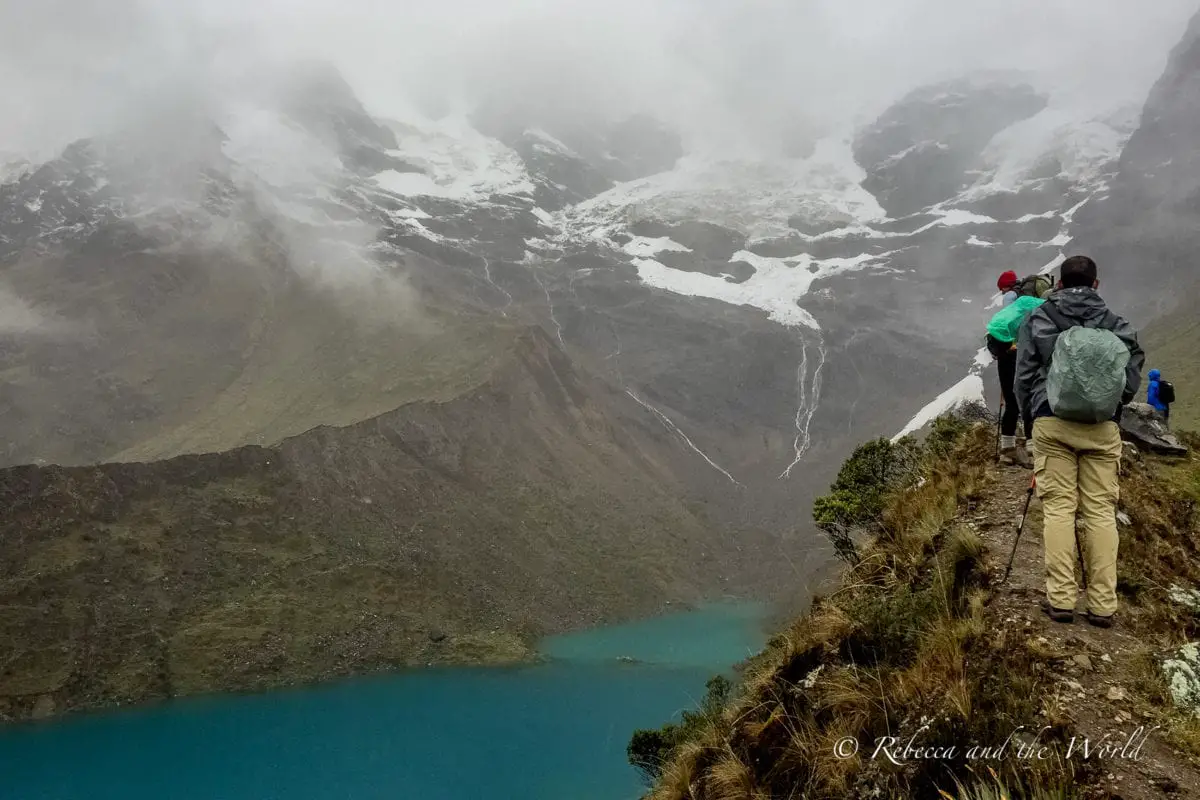
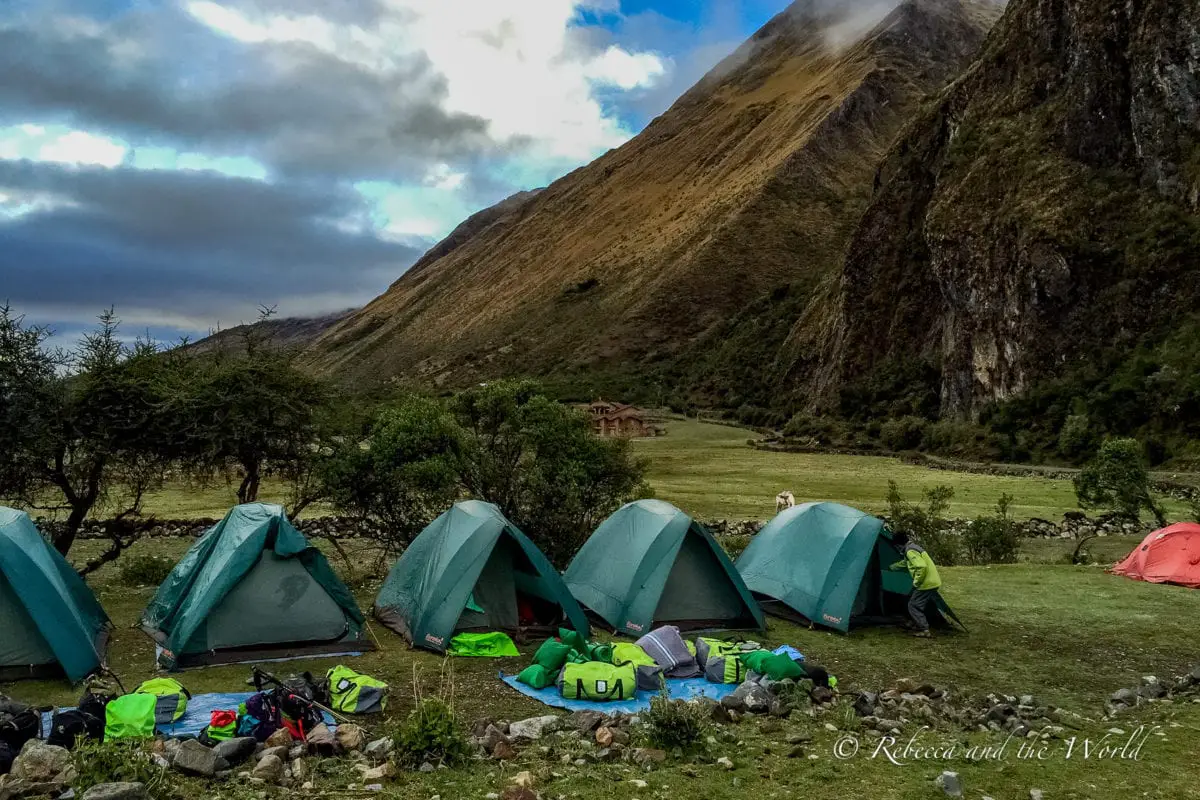
That night Yoel beckons us outside the warmth of the dining tent and points up to where the clouds have parted – unusually – to reveal a rare glimpse of the peak of Salkantay.
Climbing, climbing, climbing
We wake early on the second day and crawl out of our tents anxious to start, but knowing that it will be our longest day of walking.
The landscape in the morning is straight out of Lord of the Rings, green, rocky fields cut with bubbling streams, before we reach the real challenge: climbing up to Salkantay Pass, reaching 4,620 metres above sea level, the highest I’ve ever been.
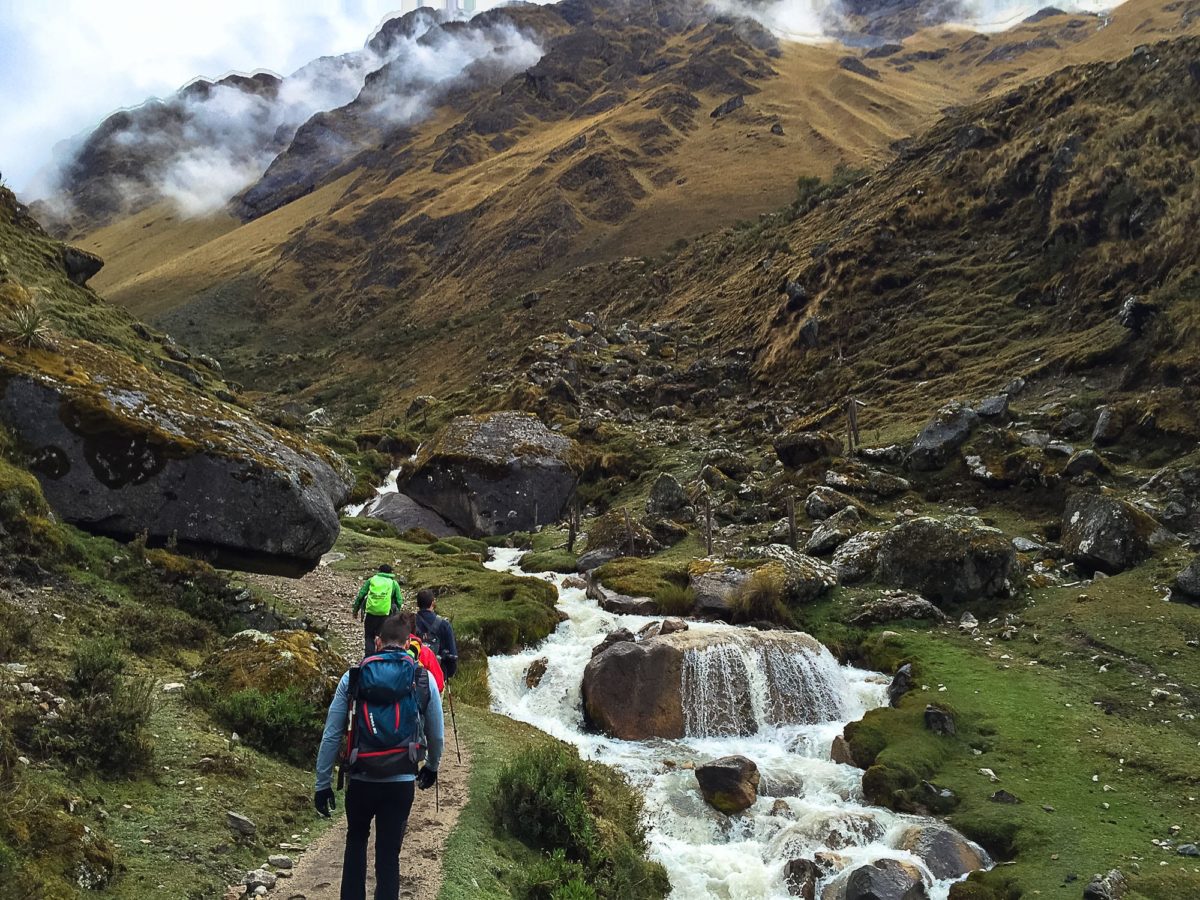
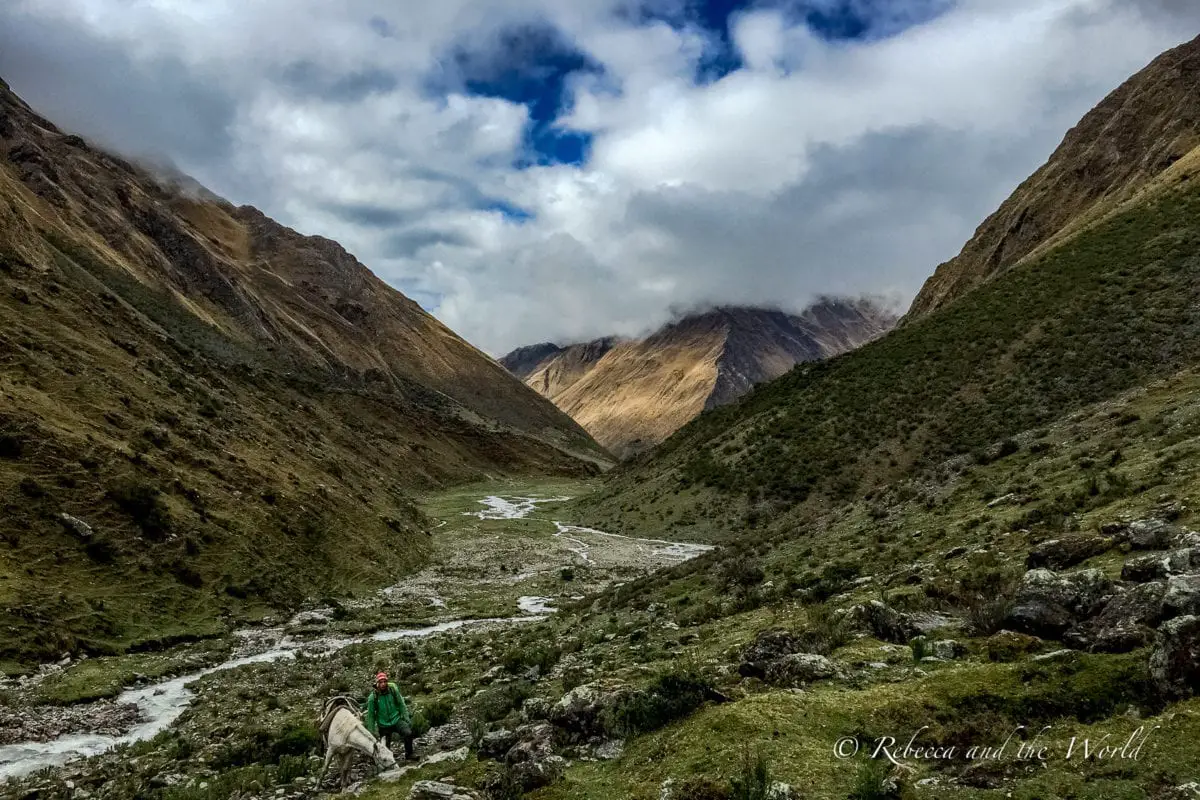
We join a slow stream of people, all steadily plodding along, one foot in front of the other, avoiding looking up to see how much further we have to go. As we reach the top, small piles of snow crunch underfoot, and the chilly air makes our noses run.
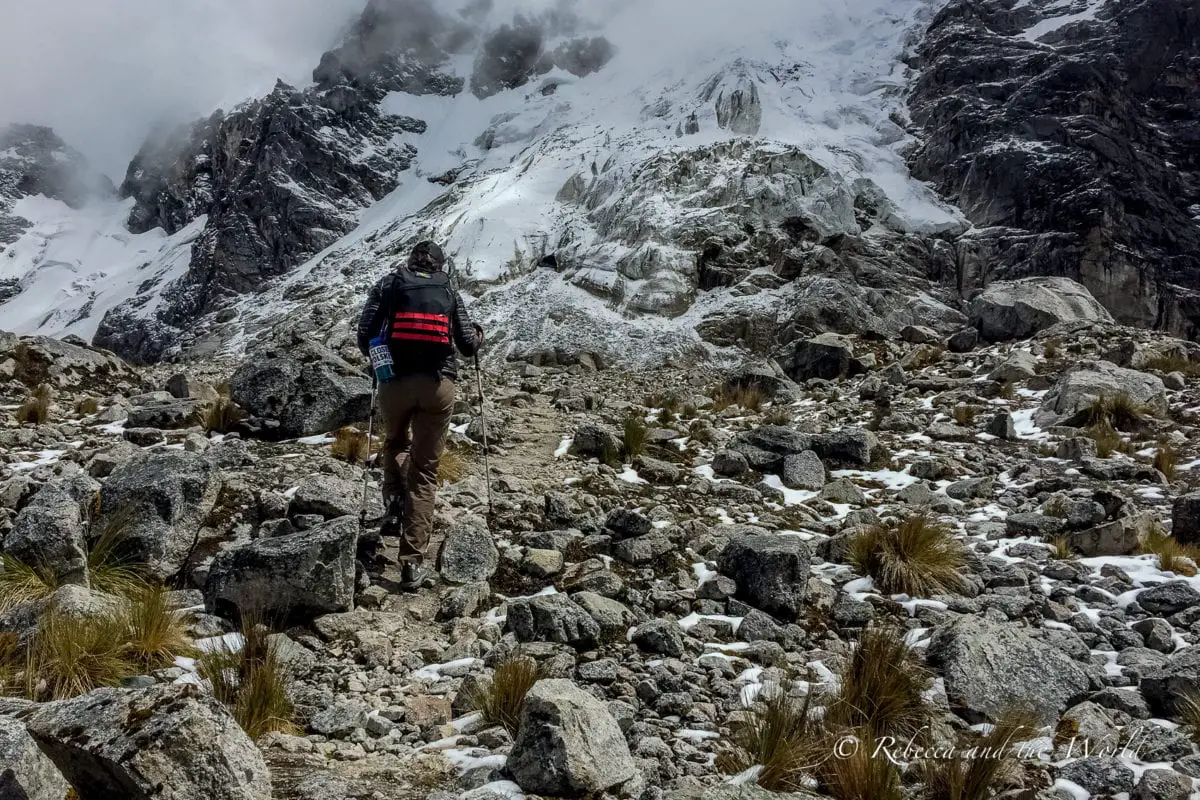
The descent is heaven and when we reach the wooden cabin that is our lunch spot, we all yank off our boots and socks and collapse over our backpacks.
Lunch is a feast of fried chicken and steamed fish and fresh local vegetables. There is no chance of going hungry along the way.
READ NEXT: The top things to do in Cusco, Peru
Into the jungle
Day three and the landscape changes completely. We strip off our thick sweaters as we descend into the jungle, surrounded by lush vegetation that brings a suffocating heat.
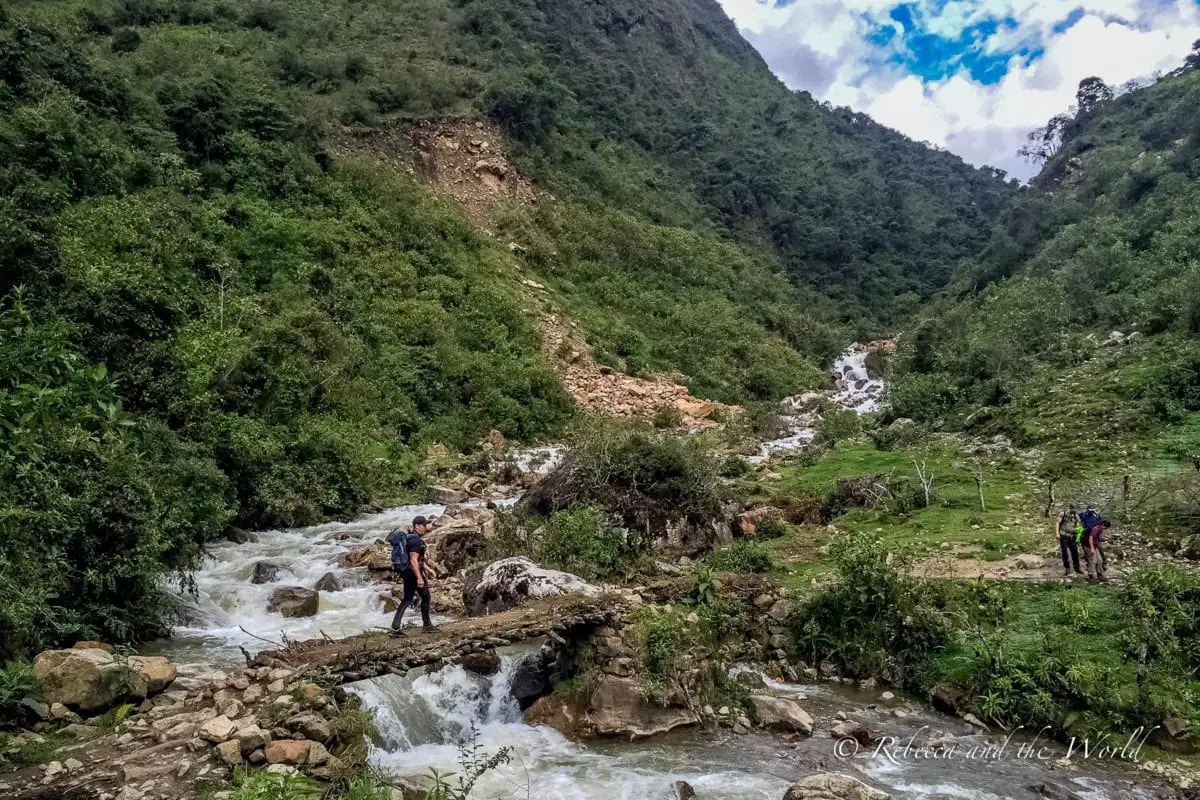

This is coffee-growing country. We take a tour of a small plantation, slapping away hundreds of minute mosquitoes that settle on the backs of my knees looking for sustenance. Later, the owners roast the coffee over the fire and serve hot, strong coffee.
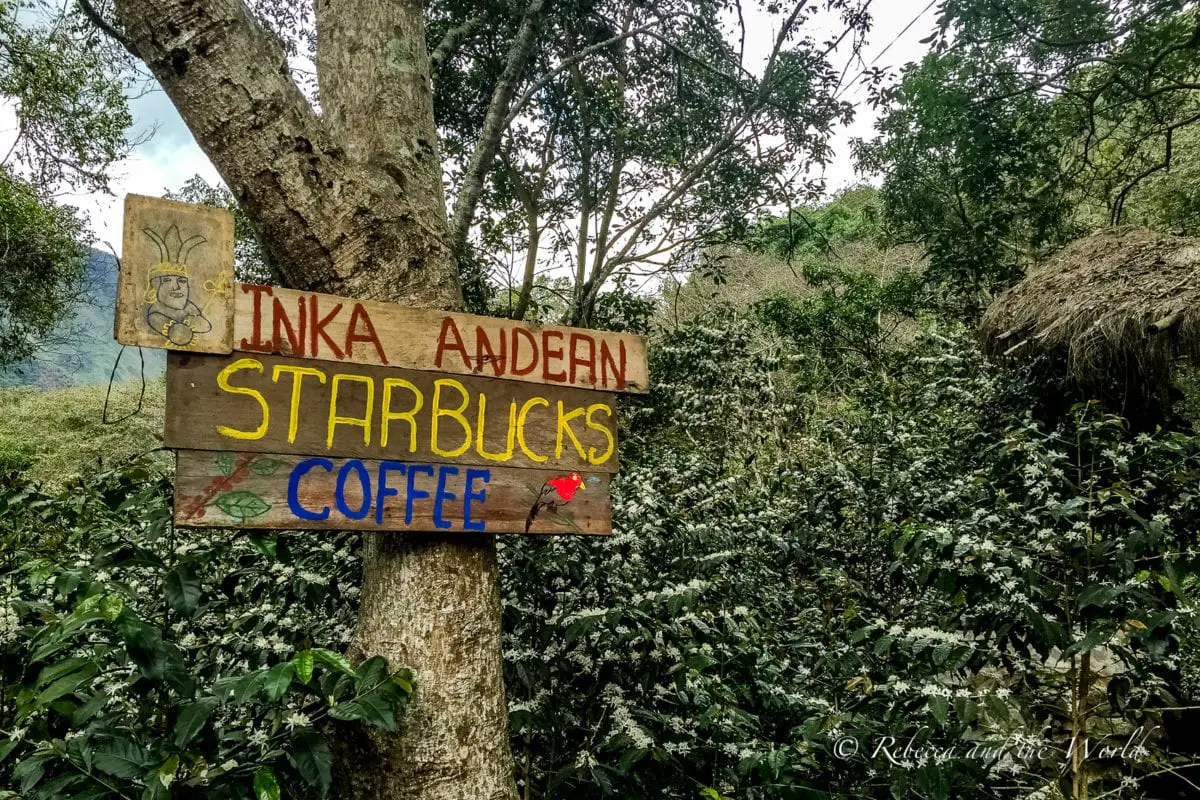
The afternoon brings a steep climb. Yoel warns us that it will be the hardest 45 minutes but that our reward will be an amazing camping site all to ourselves.
It is hard. I begin counting steps to keep myself going. A hundred steps. Rest. Another hundred steps. Rest. I tell myself over and over that I can do this, that I can make it to the top.
At one rest stop, a couple of the porters jog past, enormous sacks on their backs like fluorescent turtle shells, huge grins on their faces.
They call the support team – horsemen, porters, cooks – the “Green Machine”, so named for the green shirts they wear (Alpaca Expeditions’ company colour) and the fact that they really do operate like a machine, always ahead of us, setting up tents and boiling water, cooking amazing meals in basic conditions, always with unfaltering energy.
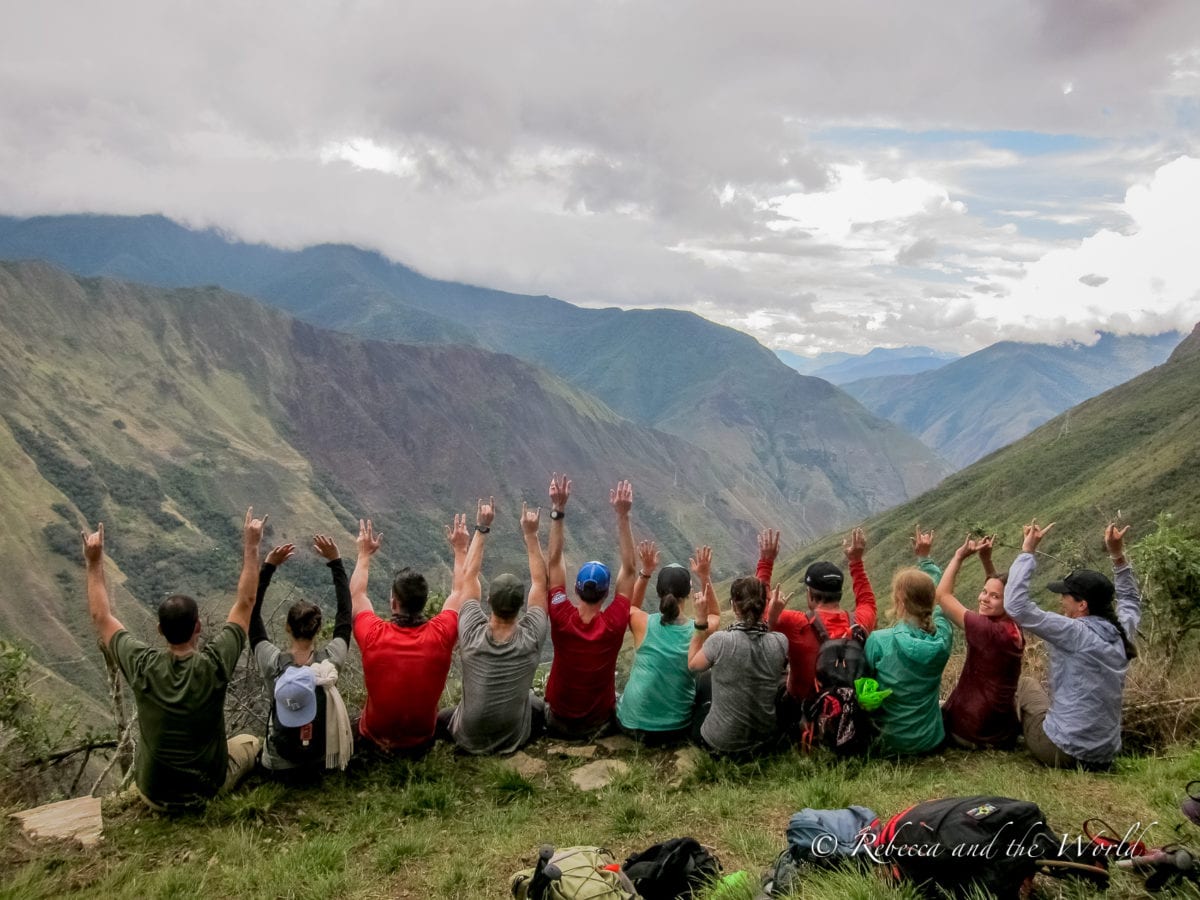
That night we sleep at a campsite alongside Llactapata, another archeological site that experts believe could have been an important rest stop and shrine on the way to Machu Picchu. Across the vast valley we have a view of Machu Picchu – our first sighting.
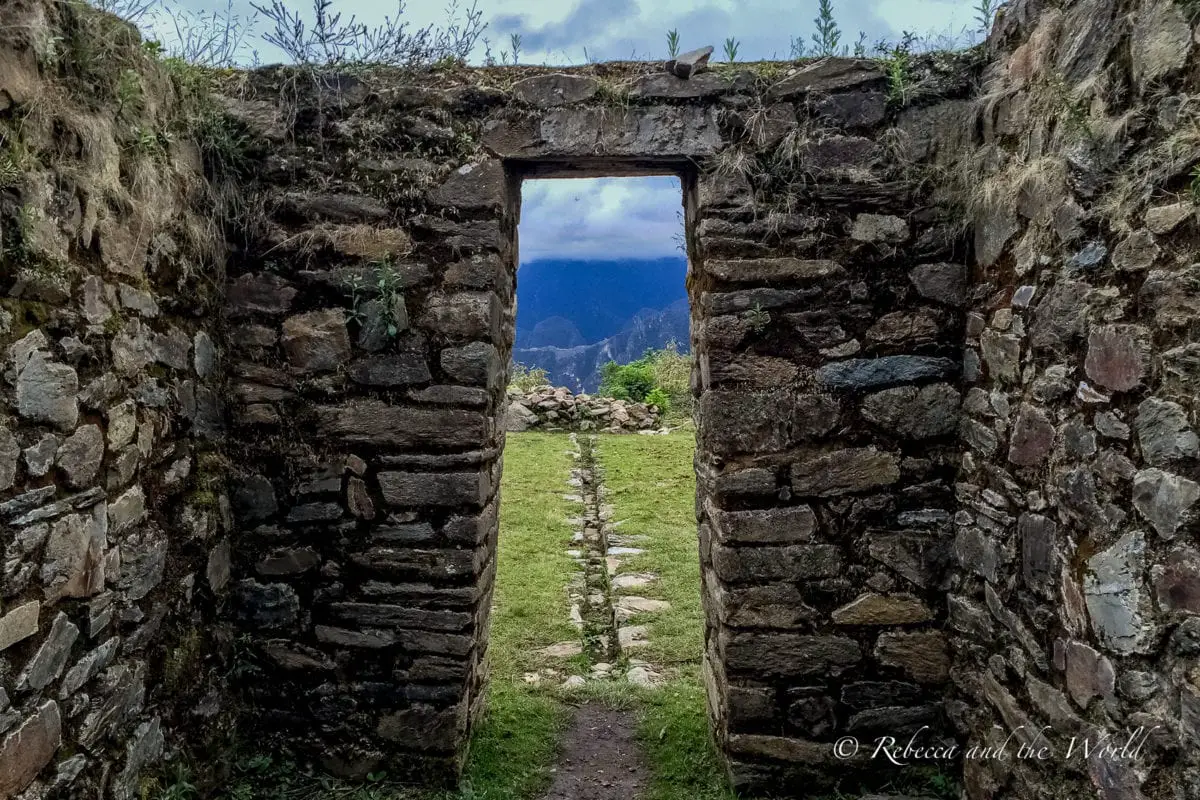
The final leg to Machu Picchu
With the dawning of our final day of walking comes rain. We don huge green ponchos and start out on what becomes a day of drudgery.
First we descend through the jungle, then past a hydroelectric plant, and then alongside a seemingly never-ending railway track. The rain, the lack of scenery, the mud: it all adds up to a dull day, an anticlimax to a four-day journey.
We arrive in Aguas Calientes and the hotel, a bed with fresh sheets and a shower are all heavenly.
That night we eat our last meal as a group, barely containing our excitement about the following day. After four days of walking we’re almost there, almost at Machu Picchu.
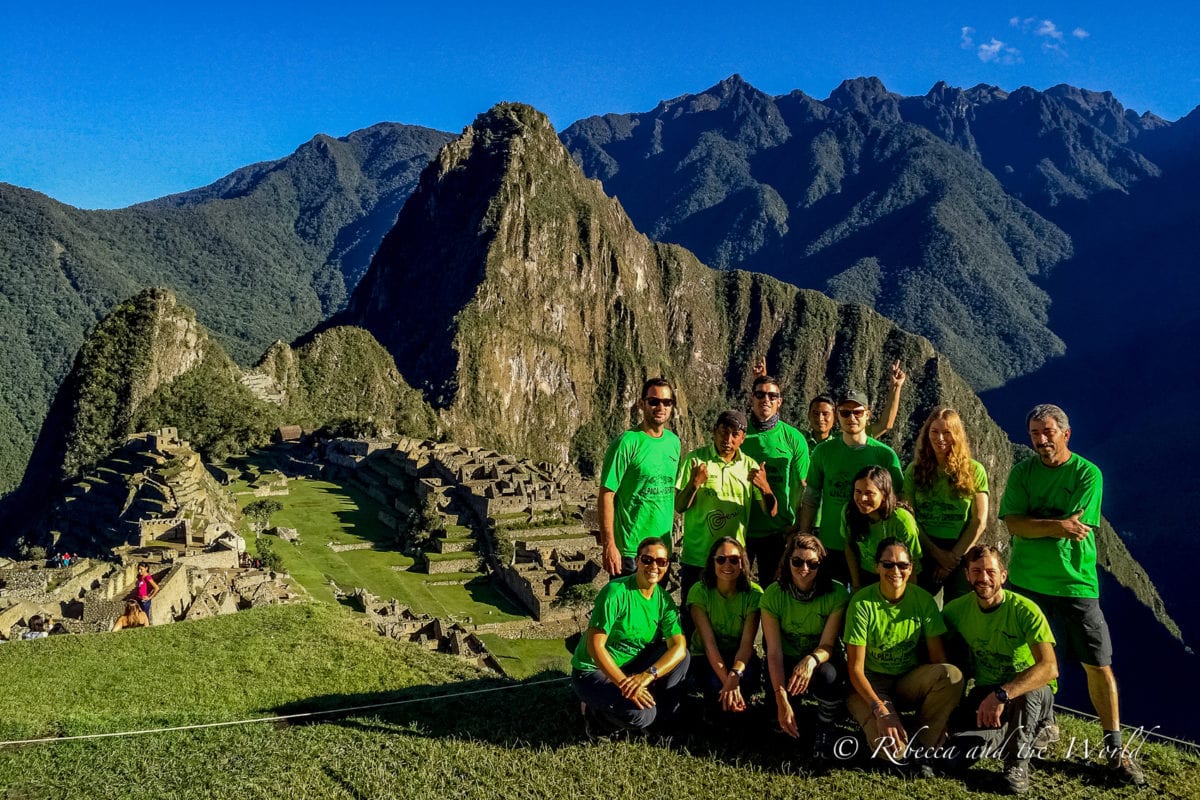
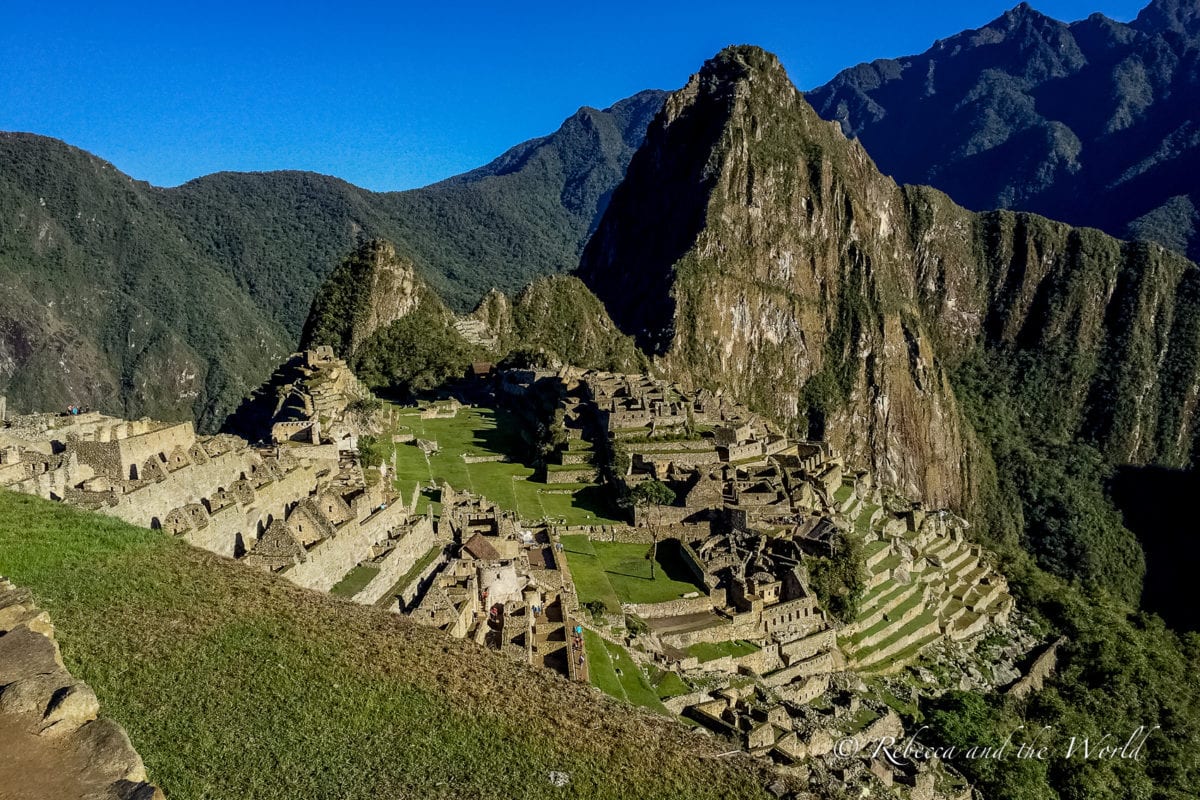
Did you find this article helpful? Consider buying me a coffee as a way to say thanks!
Have you ever been to Machu Picchu? How did you get there?
Related posts
Before you go… here are some other travel articles you might like.
- The Ultimate Salkantay Trek Packing List: What to Take (and What to Leave Behind)
- 2 Weeks in Argentina: The Ultimate Argentina Itinerary
- Rio de Janeiro Itinerary: 3 Days in The Marvellous City
- 2 Days in Santiago, Chile: 11 Things You MUST Do
- Carry-On Essentials: How to Survive a Long-Haul Flight (+ Downloadable Packing List)
BOOKING A TRIP SOON? HERE ARE SOME HELPFUL LINKS
- Book your flight online with Skyscanner – it’s where I always start my flight research.
- Find a great hotel on Booking.com.
- Need a rental car? Compare prices and vehicles on DiscoverCars.
- Omio is a great site for booking buses, trains and ferries across Europe.
- Check out the huge range of day tours throughout major cities and countries on GetYourGuide, Klook or Viator. There’s something for everyone.
- One thing I always purchase is travel insurance. Travel Insurance Master allows you to compare across multiple policy providers, while SafetyWing is great for long-term travellers and digital nomads.
- Stuff I always pack? A reusable water bottle, packing cubes and a handy electronics organiser.



Great read! I am leaving in a couple of weeks to do this trek too. Which month did you do this trek? I am trying to find more info on how to pack for a December trek on this trail. Thanks!
Max
Have the most amazing time! We loved it. We did it in early/mid November.